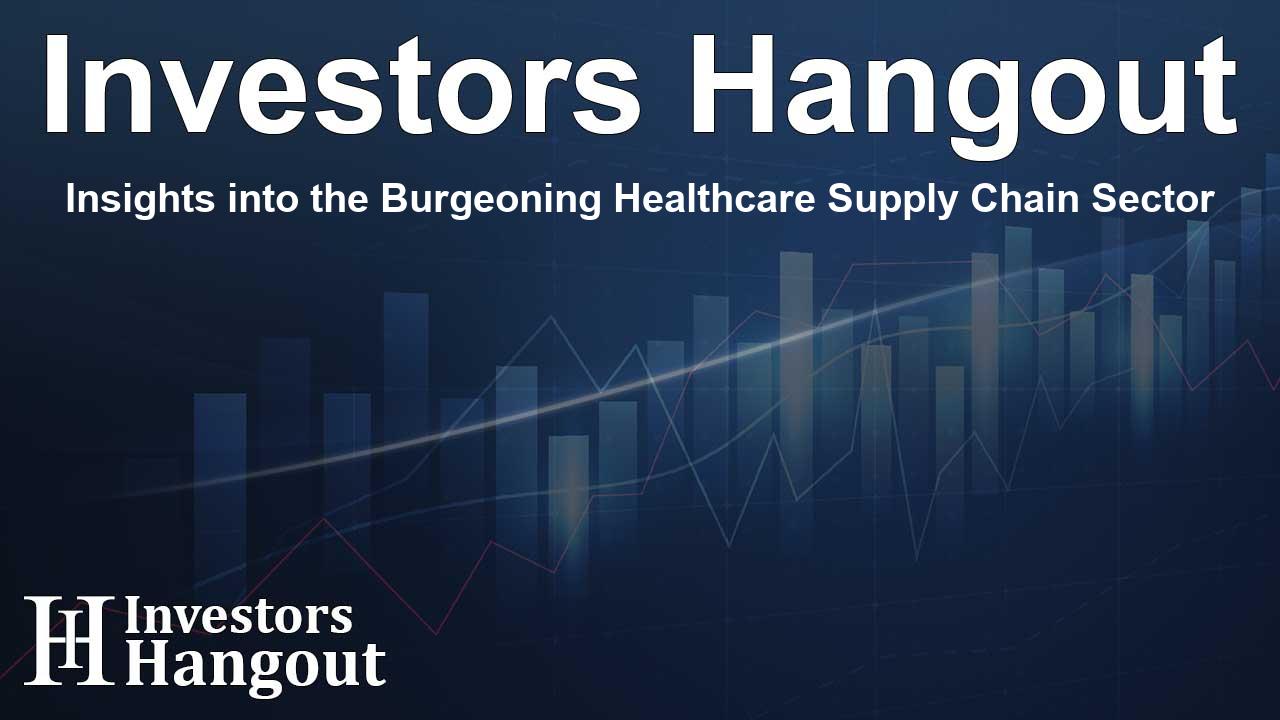Insights into the Burgeoning Healthcare Supply Chain Sector

Understanding the Healthcare Supply Chain Management Boom
The healthcare supply chain management market is undergoing remarkable growth, projected to rise significantly over the next decade. Currently valued at approximately USD 3.24 billion, it is anticipated to reach around USD 9.20 billion by the year 2034. This reflects a robust compound annual growth rate (CAGR) of 11.05%. The increasing demand for efficiency and cost management, coupled with technological advancements, is rapidly reshaping this landscape.
Market Overview and Key Metrics
Recent reports highlight several key metrics driving this growth. The healthcare sector is experiencing a surge in investments, with substantial government and private sector spending aimed at enhancing healthcare delivery systems. Notably, the software component within supply chain systems is projected to dominate, leading the market as healthcare organizations seek solutions for real-time visibility and predictive analytical capabilities. The cloud-based delivery segment is also significantly rising, allowing for scalable solutions tailored to the need for remote access and data sharing.
Regional Insights and Trends
North America is currently leading the healthcare supply chain management space, accounting for about 46% of the market share. This dominance stems from increased healthcare expenditures and the implementation of stringent regulatory standards aimed at improving patient safety and supply chain transparency. Conversely, the Asia-Pacific region is poised for rapid expansion, driven by advancements in healthcare infrastructure and the adoption of innovative technologies like artificial intelligence and blockchain. These developments enhance tracking capabilities and improve inventory management systems, vital for maintaining supply chain integrity.
Key Drivers of Market Growth
Several factors contribute to the expansion of the healthcare supply chain management sector: the rise in healthcare spending across both developed and emerging economies, advancements in inventory management systems, and the growing emphasis on sustainability and patient safety. The increasing involvement of technology firms in this space is critical, leading to innovations such as RFID tracking and automated delivery systems using drones and robotics. These advancements not only enhance efficiency but are also expected to improve overall patient outcomes.
Technological Innovations Transforming the Sector
Technologies such as IoT and AI are becoming integral to enhancing healthcare supply chains. For instance, systems that automatically reorder stock once thresholds are reached are becoming more prevalent. These seamless integrations are crucial in mitigating the risks associated with overstocking or understocking critical medical supplies. Furthermore, software solutions are evolving to include sophisticated analytics that help forecast demand and manage inventories more effectively.
Challenges Facing the Market
Despite the optimistic outlook, the sector does face challenges. The unpredictable nature of healthcare needs, particularly amid pandemics, poses difficulties in balancing inventory levels effectively. Additionally, rising costs in labor, materials, and energy are exerting pressure on the budgets of healthcare providers. Addressing these hurdles is paramount for the sector's continued growth.
Major Players in the Healthcare Supply Chain
Several key industry players are pivotal in shaping the direction of the healthcare supply chain management market. Companies like Oracle Corporation, SAP SE, and McKesson Corporation are focusing on technological innovations to secure their competitive edge. Their contributions are helping improve overall efficiency and minimize costs, thus enhancing the delivery of healthcare services.
Future Outlook for the Healthcare Supply Chain
Looking ahead, the healthcare supply chain management market presents numerous opportunities. With the emphasis on digital transformation, companies are increasingly exploring automated solutions to streamline operations. As market demands evolve, the focus will likely remain on enhancing technology integration, sustainability initiatives, and enhancing supply chain resilience.
Frequently Asked Questions
What is the projected growth of the healthcare supply chain management market?
The market is expected to grow from USD 3.24 billion to USD 9.20 billion by 2034, reflecting a CAGR of 11.05%.
Why is North America leading the healthcare supply chain market?
North America accounts for a significant market share due to increased healthcare spending and stringent regulation compliance.
What technologies are influencing the healthcare supply chain?
Technologies such as IoT, AI, and blockchain are critical for enhancing visibility, efficiency, and inventory management in the healthcare supply chain.
Which segments are projected to grow the fastest?
The cloud-based delivery segment and the software component are anticipated to see the fastest growth in the coming years.
How do supply chain challenges impact healthcare providers?
Challenges like unpredictable demand can lead to inefficiencies in inventory management, impacting overall costs and patient care.
About The Author
Contact Thomas Cooper privately here. Or send an email with ATTN: Thomas Cooper as the subject to contact@investorshangout.com.
About Investors Hangout
Investors Hangout is a leading online stock forum for financial discussion and learning, offering a wide range of free tools and resources. It draws in traders of all levels, who exchange market knowledge, investigate trading tactics, and keep an eye on industry developments in real time. Featuring financial articles, stock message boards, quotes, charts, company profiles, and live news updates. Through cooperative learning and a wealth of informational resources, it helps users from novices creating their first portfolios to experts honing their techniques. Join Investors Hangout today: https://investorshangout.com/
The content of this article is based on factual, publicly available information and does not represent legal, financial, or investment advice. Investors Hangout does not offer financial advice, and the author is not a licensed financial advisor. Consult a qualified advisor before making any financial or investment decisions based on this article. This article should not be considered advice to purchase, sell, or hold any securities or other investments. If any of the material provided here is inaccurate, please contact us for corrections.
